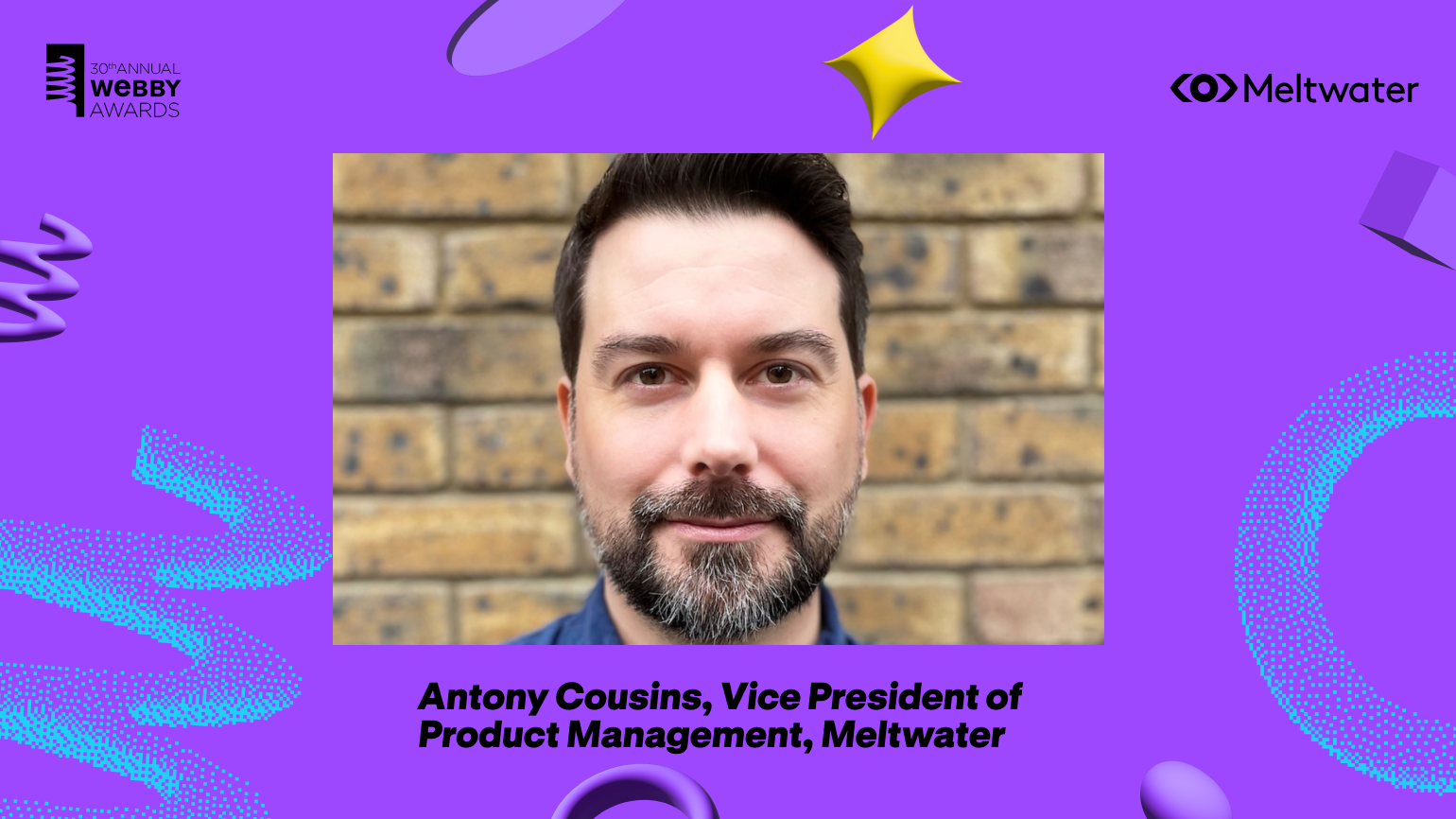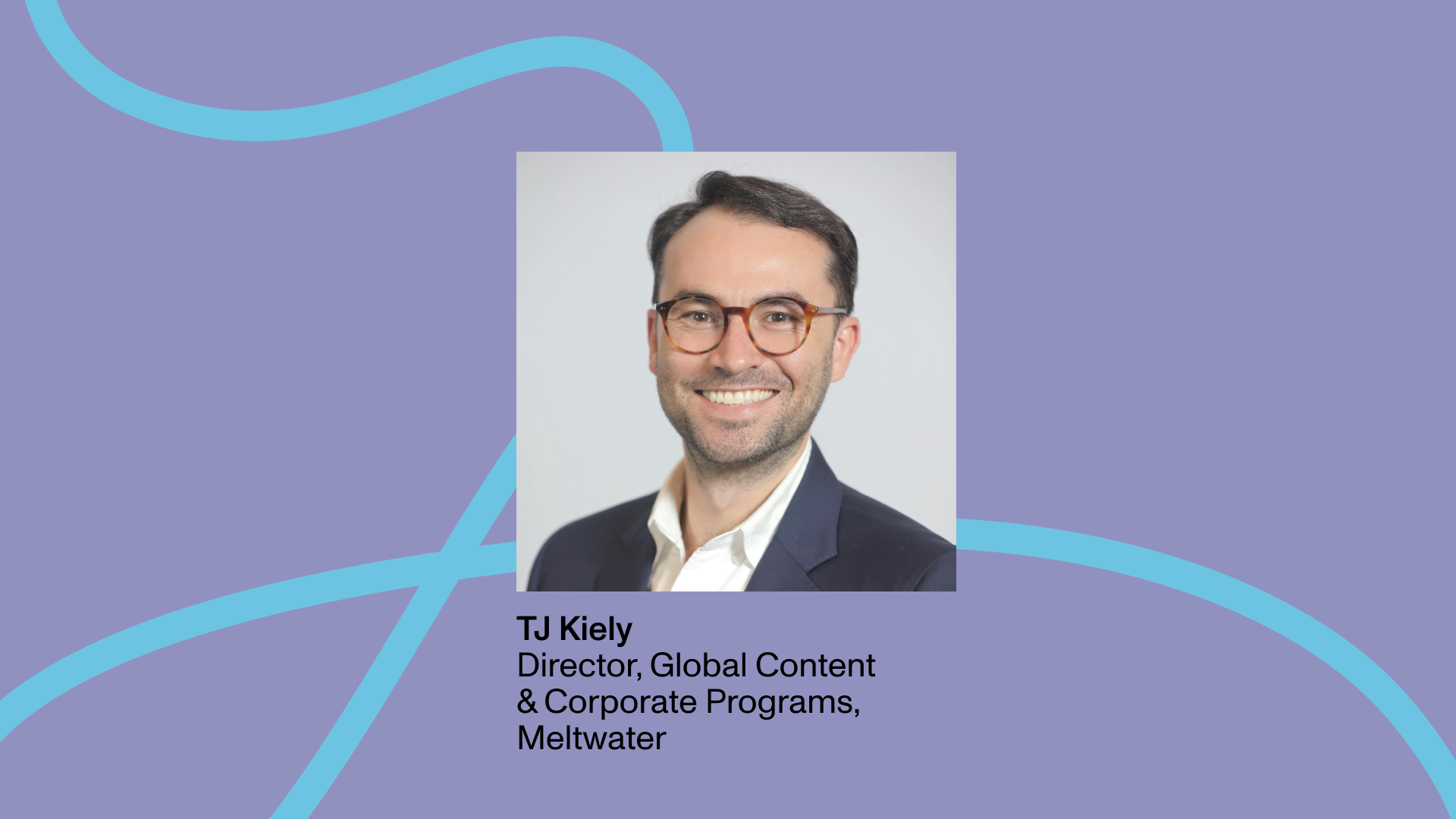Artificial intelligence is changing the speed, scale, and expectations of marketing, and with it, the meaning of trust. As AI-generated content becomes more common and more difficult to distinguish from human-generated material, audiences are increasingly discerning, rewarding transparency and authenticity over automation.
Antony Cousins, Meltwater’s Vice President of Product Management – Global Applications & Architecture, believes that understanding those dynamics is critical for modern brands. In this interview, Antony shares how brands can serve increasingly fragmented audiences, use AI responsibly, and make decisions grounded in cultural intelligence.
How are conversations around trust and AI impacting the cultural landscape for brands?
Broadly, we’re seeing audience trust decline in historically trusted institutions, but increase within a smaller range of voices and groups. People are effectively shifting their confidence from traditional, broad-based sources to a handful of communities or personalities they deeply identify with.
For brands, that makes navigating trust incredibly complex. A single post or misaligned partnership can undo years of equity. We’ve seen this play out publicly — one misjudged influencer collaboration can make or break a brand overnight.
It means brands have to be hyper-aware of who they’re aligning with and how those choices may resonate across fragmented audiences. Understanding what your audience truly believes and values, not just who they are demographically, is essential. That’s where data comes in. You can’t rely on intuition anymore; you need evidence-based understanding of which conversations, values, trends, or narratives your brand can authentically engage with.
Consumers are increasingly vocal when they suspect brands are using AI. What patterns are you seeing in this skepticism, and how should brands think about transparency?
A lot of skepticism isn’t about the technology itself; it’s about the intent behind it. People push back when they feel a brand is using AI in ways that prioritize cost savings over human value. For example, replacing people with AI just because it’s cheaper creates a perception of exploitation, not innovation.
When AI is used to elevate human creativity, to remove the repetitive, tedious parts of a process, people are much more receptive. As author Joanna Maciejewska said, “I want AI to do my laundry and dishes so that I can do art and writing, not for AI to do my art and writing so that I can do my laundry and dishes.” That perfectly captures the balance brands need to strike.
Transparency helps too. If AI was used in a campaign, it costs nothing to say so. When brands are open about their process and show how AI helped them be more creative, efficient, or sustainable, rather than deceptive or dismissive, consumers reward that honesty.
How has consumer sentiment toward AI-generated content shifted? Are people becoming more accustomed to it?
Absolutely, people are adapting quickly. We’re in a sort of “honeymoon period” with AI-generated content, where novelty still drives engagement. There’s a lot of curiosity and experimentation, and sometimes that results in great creative moments.
But there’s also a lot of low-effort content flooding people’s feeds, which some are calling “AI slop.” Over time, we’ll see audiences gravitate back toward quality and authenticity. The successful brands will be the ones combining AI’s efficiency with strong creative direction and a clear point of view.
AI doesn’t replace taste, judgment, or originality; it amplifies them. The people and brands already producing high-quality work will use AI to do it faster. But AI isn’t going to dramatically change the performance of brands without a strong creative vision.
When are people responding positively to brands using AI? What patterns make it work?
When AI is used to enhance the experience, not replace it. Think about it like this: the best applications of AI make people feel seen, not sold to.
For example, using AI to surface more relevant insights about what customers care about, or to personalize an experience in a way that feels human, not mechanical. When people can tell the brand has put thought and care into how AI improves their interaction, whether that’s through better storytelling, faster response times, or more inclusive creative, that’s when it works.
Brands’ use of AI influencers is polarizing—from Lu of Magalu’s cult following to Meta’s backlash. What makes a brand’s use of AI influencers trustworthy?
It comes down to purpose and transparency. If the AI influencer exists purely as a gimmick, audiences see right through it. But if there’s a creative or cultural reason for that character to exist, for example, representing a digital-native perspective or bringing a new kind of story to life, people engage with it differently.
The trust gap closes when brands are upfront about what’s real, what’s synthetic, and why they made that choice. As with human influencers, authenticity is the currency. AI doesn’t exempt you from that; it raises the bar.
What’s the most important thing brands should know about building trust as they integrate AI into their work this year?
They need to understand their audiences, recognize that they are fragmented, and recognize that AI is probably the only way they can scale their content development. If you’re still producing just one version of your messaging, one version of your content, you’ll lose — you need to create personalized content for all of those fragmented audiences, and it’s going to be almost impossible to do that without AI.
Trust isn’t something you can automate. It’s built through consistency, through showing up in ways that align with your values and your audience’s expectations. And it’s lost in a second if you’re caught pandering to opposing views. Today, not picking a side is picking a side.
AI can help you understand and act faster, but the decisions it powers still need a human moral compass. The brands that win will be those that use AI to deepen relationships, to scale their authenticity across audiences, not to produce messaging with a lot of words but avoid saying anything.
How can companies work with Meltwater to better understand culture and make informed decisions in today’s intelligence age?
At Meltwater, we help brands see and understand what’s shaping culture in real time. Using our AI teammate, Mira, with our social listening and consumer intelligence solution, Explore+ companies can analyze billions of conversations across social, news, and forums daily to spot emerging trends, understand sentiment shifts, and identify the narratives that matter most to their audiences.
We also recognize that, increasingly, people are turning to LLMs as their primary source of information, so it’s becoming critical for marketers to understand how their brands are portrayed in LLM responses. That’s why we recently launched GenAI Lens, an industry-first tool that gives companies unprecedented visibility into how their brand, competitors, and industry are discussed across all major AI Assistants and LLMs.
We’re helping brands move from reaction to strategy, from what happened to what’s coming next. In a world where trust is fragile and attention is fleeting, that clarity makes all the difference.
Learn more
Discover how Meltwater empowers brands to navigate the intersection of culture, trust, and technology at meltwater.com.



 Twitter
Twitter


